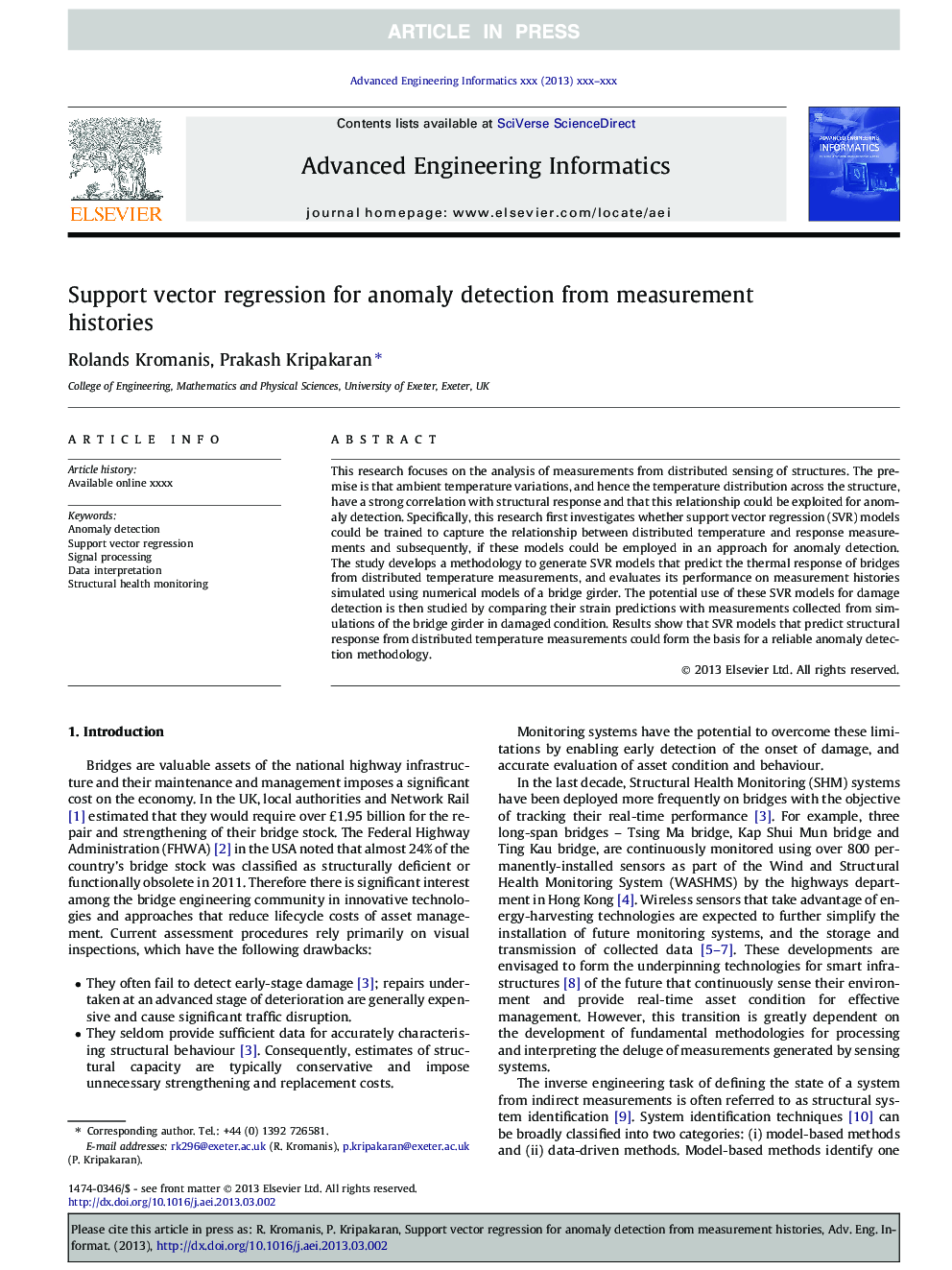| Article ID | Journal | Published Year | Pages | File Type |
|---|---|---|---|---|
| 10281769 | Advanced Engineering Informatics | 2013 | 10 Pages |
Abstract
This research focuses on the analysis of measurements from distributed sensing of structures. The premise is that ambient temperature variations, and hence the temperature distribution across the structure, have a strong correlation with structural response and that this relationship could be exploited for anomaly detection. Specifically, this research first investigates whether support vector regression (SVR) models could be trained to capture the relationship between distributed temperature and response measurements and subsequently, if these models could be employed in an approach for anomaly detection. The study develops a methodology to generate SVR models that predict the thermal response of bridges from distributed temperature measurements, and evaluates its performance on measurement histories simulated using numerical models of a bridge girder. The potential use of these SVR models for damage detection is then studied by comparing their strain predictions with measurements collected from simulations of the bridge girder in damaged condition. Results show that SVR models that predict structural response from distributed temperature measurements could form the basis for a reliable anomaly detection methodology.
Keywords
Related Topics
Physical Sciences and Engineering
Computer Science
Artificial Intelligence
Authors
Rolands Kromanis, Prakash Kripakaran,
